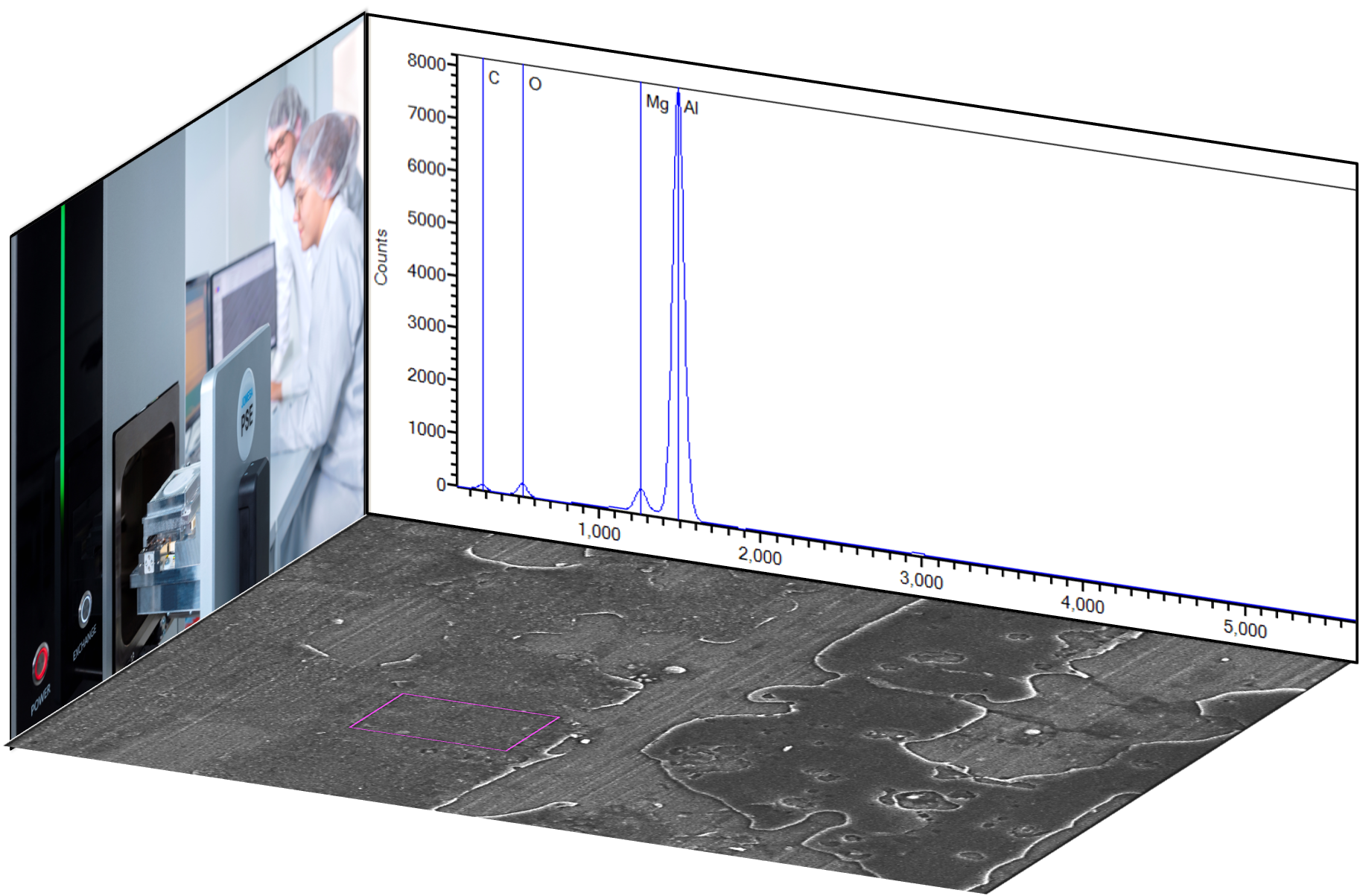Characterization of unknown contaminations
scanning electron microscopy (SEM) and energy dispersive X-ray spectroscopy (EDX)
By means of scanning electron microscopy (SEM) and energy dispersive X-ray spectroscopy (EDX) it is possible to quickly gain a first impression of a filmic contamination. Inorganic or oxidic surface adhesions appear as sharp-edged and often bright residues, while organic contaminations usually appear soft and liquid and are imaged significantly darker. In addition, EDX can be used to determine the material composition of inorganic contaminants very precisely. This is not possible for organic residues. Nevertheless, it is possible to distinguish clearly from non-organic residues due to their high carbon content.
Measuring principle
For scanning electron microscopy (SEM), an electron beam is generated at the emission cathode by applying a high voltage, which is then focused on the sample through magnetic lenses. This focused beam is then used to scan the sample. The surface excited by the high-energy electron beam delivers various signals which can be used for evaluation. Secondary electrons (SE) are emitted from the uppermost nanometers of the surface and thus map the topography of the surface with a resolution in the nanometer range. More energetic than the secondary electrons are the backscattered electrons (BSE). The intensity of the signals recorded here depends on the emitting material. Heavy elements (metals) provide more intense signals and appear bright, light elements (carbon, oxygen) appear dark.
In energy dispersive X-ray spectroscopy (EDX), the primary electron beam is used to kick a near-nucleus electron from an atom of the sample. The resulting electron gap is filled by an electron of higher energy. The energy released in this process is characteristic for the respective type of atom and thus allows the material composition of the sample to be determined.
Requirements for the sample
Since SEM/EDX measurements are performed in (high) vacuum, the sample size is limited by the instrument. The sample to be examined must not exceed an edge length of 70 mm and a height of 10 mm. In the case of large components, the areas to be examined may have to be sawn out in order to obtain a handy sample. Furthermore, no samples should be examined that are not suitable for vacuum (foams, surfaces coated with adhesive, etc.).
Profile
| Typical industrial branches | any kind of surface coating |
|---|---|
| Type of contamination | organic and inorganic surface impurities |
| Result | SEM: Imaging (material-dependent, three-dimensional), EDX: Elemental composition |
Further Information
These tests are part of our accreditation, detailed information on the scope of accreditation can be found here.
You can also find an overview of tests for chemical-film contamination in our current brochure.
If you have any questions, the employees from our sales team will be happy to help you.
Newsletter registration

